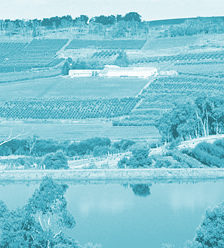Plan to boost regional shift
 Experts say millions more people could be living prosperously outside the capital cities.
Experts say millions more people could be living prosperously outside the capital cities.
The Regional Australia Institute (RAI) has set a target to see 11 million people doing well outside capital cities by 2032 as part of its Regionalisation Ambition 2032 plan.
Achieving the target would see an extra 500,000 people living in the regions, above the estimated prediction of 10.5 million.
RAI CEO Liz Ritchie says the plan sets up 20 key targets for strengthening regions which will close the divide between life in the city and the country.
It focuses on regional housing, education, health, jobs and skills, digital inclusion, transport, childcare, community participation, migration, climate, innovation and the resilience of regional communities – as well as population.
The RAI’s Regionalisation Ambition 2032 plan (available in PDF form, here) sets out the goals and targets under 5 key pillars - Jobs and Skills, Liveability, Population, Productivity and Innovation and Sustainability and Resilience.
After 11 years of research, these are the areas the RAI says are holding regions back.
“Regionalisation is about delivering on the potential of regional Australia and rebalancing our nation,” Ms Ritchie said.
“We’ve seen more than a 100 percent jump in job vacancies in the last 2.5 years. More than 3.7 million regional Australians live in a ‘childcare desert’.
“Regional home building approvals have declined in five out of the last 10 years. Remote students do half as well as their metropolitan counterparts in NAPLAN.
“These issues are all interlinked, complex and equally as important, so the development of a holistic and integrated framework is a momentous step forward to achieving better outcomes for all,” Ms Ritchie said.
“We know that you can’t solve the jobs crisis without addressing housing. We know you can’t solve the skills deficit, without improving education standards. Healthcare can’t be improved without focussing on digital connectivity.”
Economic modelling commissioned by the RAI also shows when regional Australia reaches 11 million people, national output will reach $2.3 trillion by 2032 - $13.8 billion more than under a ‘business as usual’ scenario.
“People are voting with their feet and looking for a different life beyond our capitals. Move to More is now more apparent than ever before. But we can’t shift the population dial further if the critical issues facing regions aren’t addressed,” Ms Ritchie said.
At Federation, just under two thirds of Australia’s population lived in the regions. Now, just under two thirds of Australia’s population is living in the capitals, and the cities of Sydney and Melbourne on a trajectory to ‘megacity’ status – more than 10 million – by the middle of this century.
“Our research tells us that a megacity future isn’t the right outcome for Australia. We know as a nation we will be happier, more sustainable and more productive if we alter the path we are on,” Ms Ritchie said.








 Print
Print